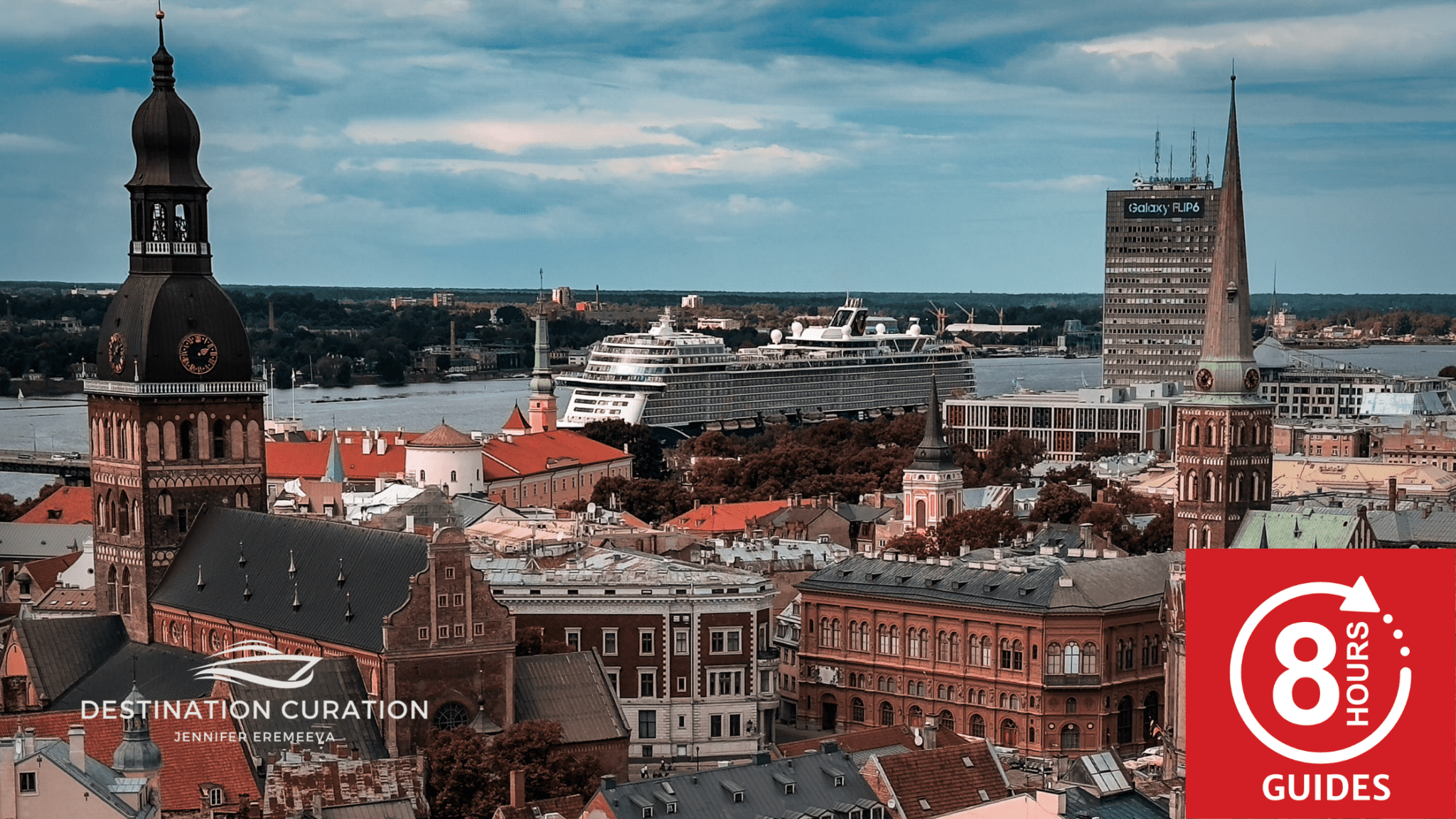
What to do with 8 Hours in Riga? Plenty! Wander through its medieval Old Town and its elegant Art Nouveau district. Sample Latvian delicacies in the city’s famed Central Market, housed in up-cycled World War I airplane hangers.
This post contains affiliate links, including links from the Amazon Associates programs. These links will direct you to products I recommend for further exploration and enjoyment of the topics I cover on my website and in my lectures. See more in the Privacy Policy below.
I am, of course, quite biased. The city of Riga is my home and I simply love it. I love that Riga combines elegance with informal coziness, and the Nordic concept of hygge. Riga’s manageable size makes it ideal for the cruise visitor who has about 8 hours in which to enjoy its primary charms. Riga’s medieval Old Town and stunning Art Nouveau Quarter are both easily explored by foot.
Tour Riga’s Medieval Old Town
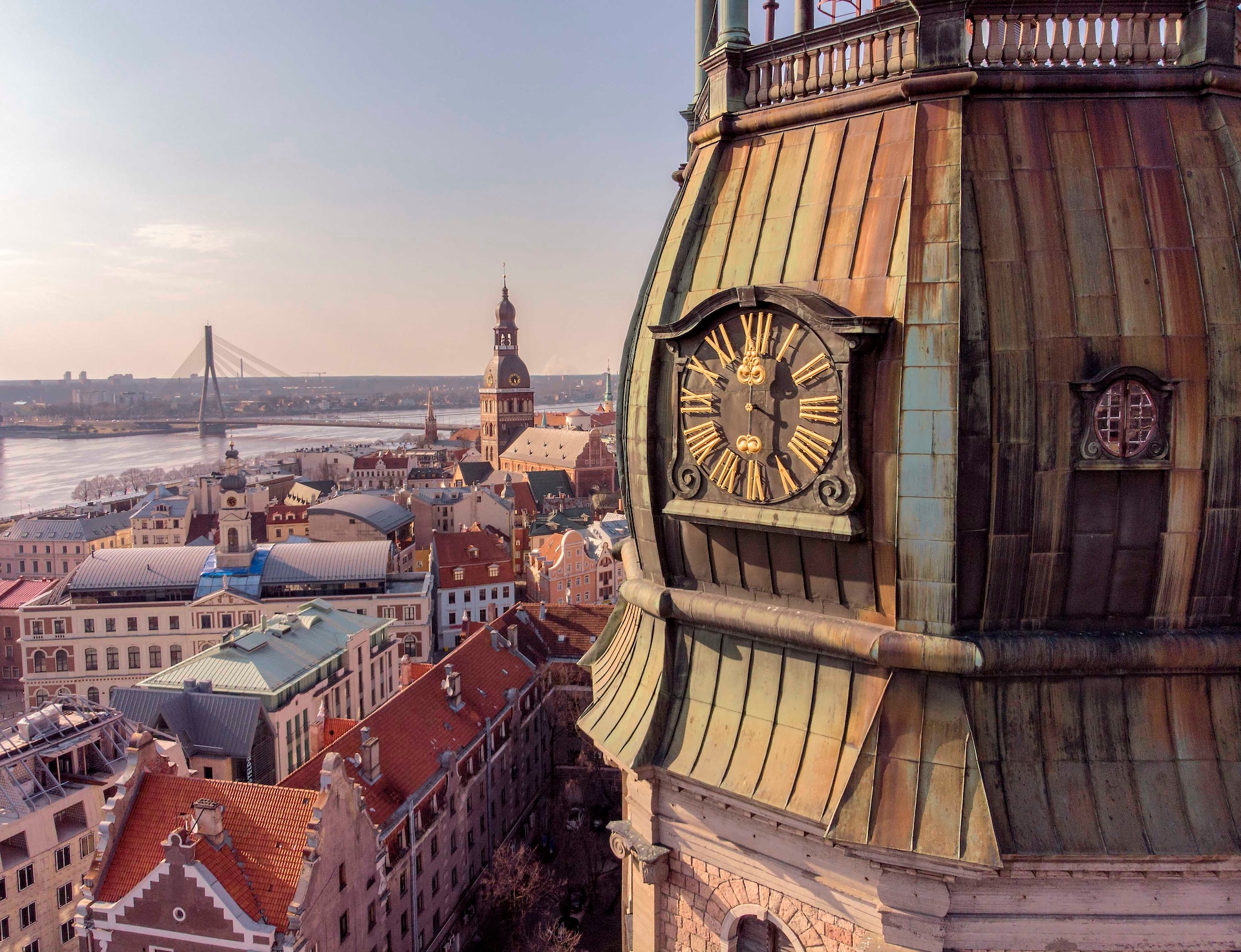
Arial View of Riga (Photo Credit: Olga_Shu via Shutterstock)
Immerse yourself in the narrow, winding cobblestone streets of Riga’s Old Town, which dates back to the 13th century. Begin in Riga’s main square, Rātslaukums, where you will find the iconic Brotherhood of the Black Faces Hall, The Town Hall, the statue of Roland, and the site of the world’s first Christmas tree, put up by the guild in the early 16th century.
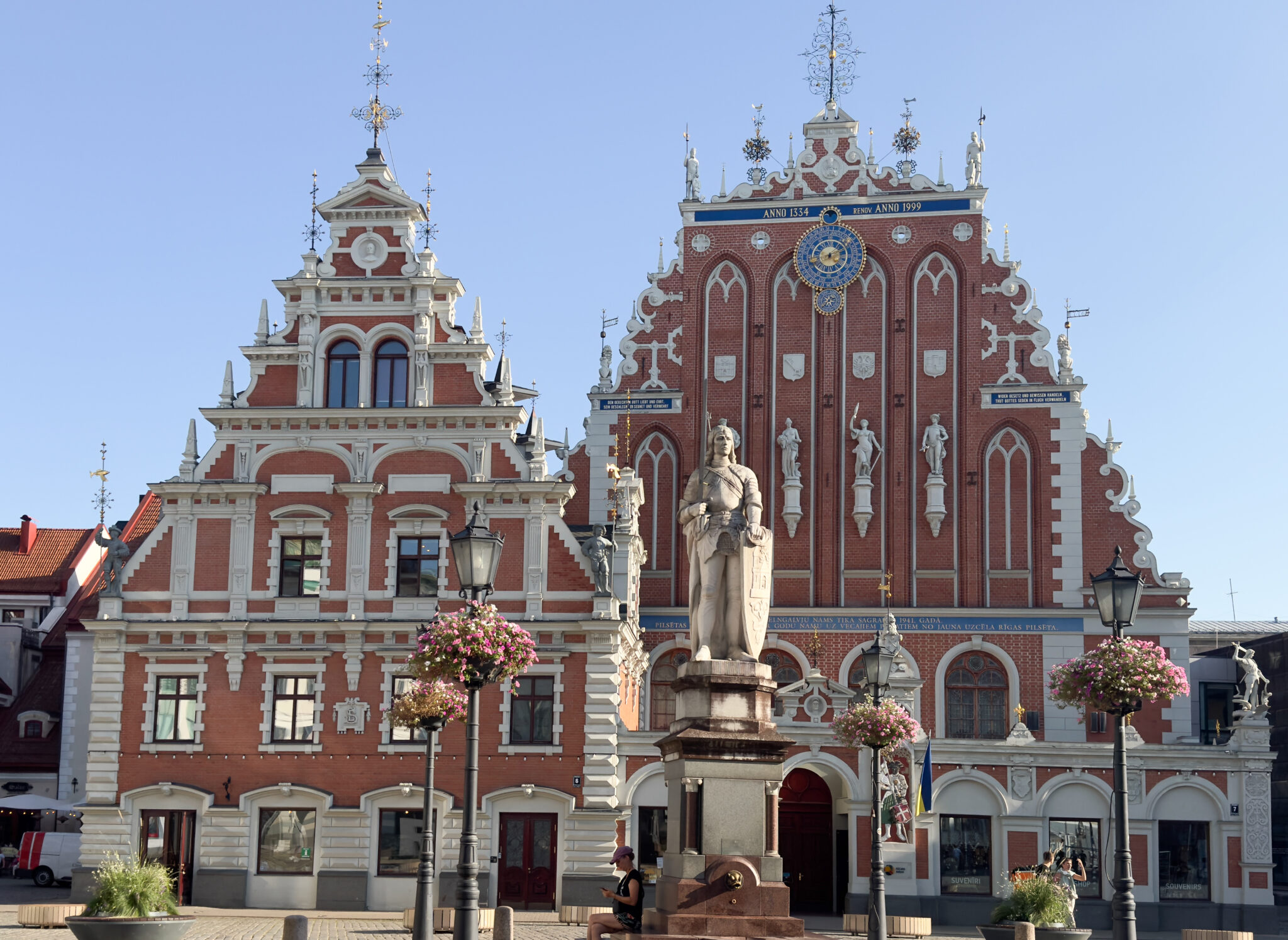
The Brotherhood of the Black Faces | Photo Credit: Jennifer Eremeeva
Next, make your way to Doma Laukums, site of the city’s main cathedral. Enjoy a drink or coffee in one of the square’s many cafes and enjoy incomparable views of the cathedral. Take in the city’s oldest buildings just behind the square, known as The Three Brothers, where you will find the Latvian Museum of Architecture.
Before you leave the Old Town, be sure to pay a visit to the Freedom Monument, which is the geographic and emotional heart of the city. The monument was erected in 1935 to commemorate those who died fighting in Latvia’s War of Independence (1918-20). The sculptures represent Latvia’s rich culture and history. During the Soviet era, authorities planned to demolish the monument, but leading artists intervened and it was saved, however access to the monument was forbidden during the Soviet era.
Today, the Freedom Monument is available to everyone, and a guard of honor changes each hour from 9 to 6. Floral tributes are often brought to the monuments on ceremonial days.
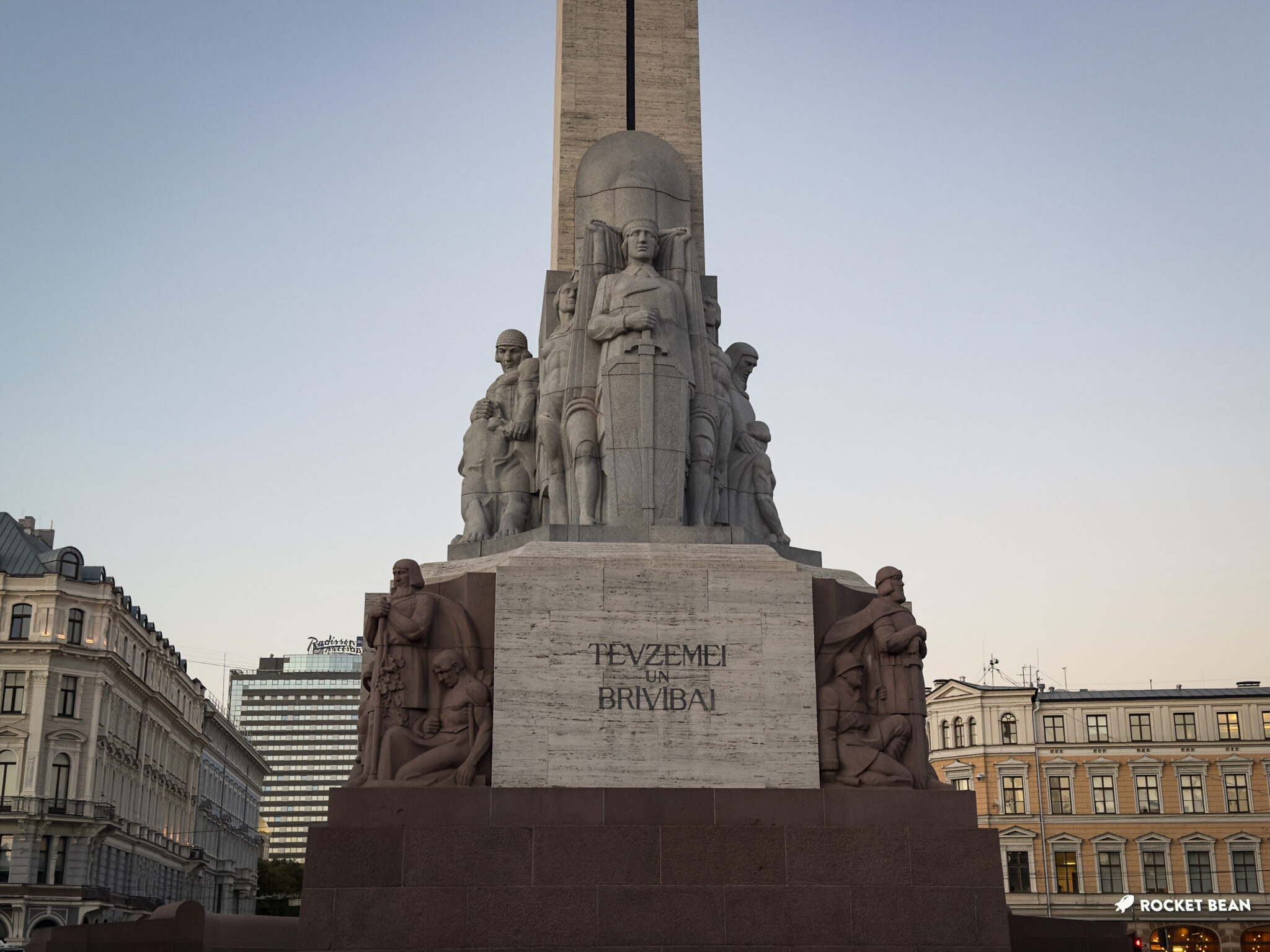
The Freedom Monument | Photo Credit: Jennifer Eremeeva
Guided Excursions
The Old Town is compact, but its narrow streets can be confusing. To make the most of your time, consider booking one of these individual excursions, many of which will pick you up at the ship or your hotel for a small surcharge.
- Private City Tour and Jewish History
- Best of Riga Segway Tour
- Old Town Walking Tour
- Hop-On-Hop-Off Bus, which has a stop conveniently near the city cruise pier. This bus loops through the major attractions, including the Art Nouveau quarter, the National Opera House, and the colorful Kalnciems Quarter Market, to name just a few.
Shopping Tip
Pop into Jaunais Salons just behind the Town Hall at Maze Jauniela 3 and SENĀ KLĒTS at Rātslaukums 1 for beautiful Latvian textiles, embroidered belts called Lielvārde Belts, national costumes, woolen goods, porcelain, Christmas ornaments and other high end crafts.
The Museum of Occupation
If time permits, visit Riga’s moving Museum of Occupation, on the Town Hall Square (Latviesu strelniēku lakums, 1) just behind the monument to the first Christmas tree. This former Communist Party building has been turned into a multi-media facility, which tells the story of Latvia’s occupation by both the Soviets and the Nazis, as well as the hard-fought path to independence. The museum is extremely well designed and the exhibits are moving, and underscore modern Latvians’ determination to remain independent, but also their commitment to be fully cognizant of the horrors of the years of Occupation.
The Art Nouveau District
Riga is famous for its stunning Art Nouveau buildings. More than 800 buildings in Riga are built in this iconic style, made popular at the end of the 19th century throughout Europe. The quality and variety of Riga’s Art Nouveau buildings earned the city a coveted UNESCO World Heritage Site designation in 1997.
Most of the key buildings in Riga are in the neighborhood just across the canal from the Old City, known to locals as “The Quiet Center” and visitors as “The Art Nouveau District.”
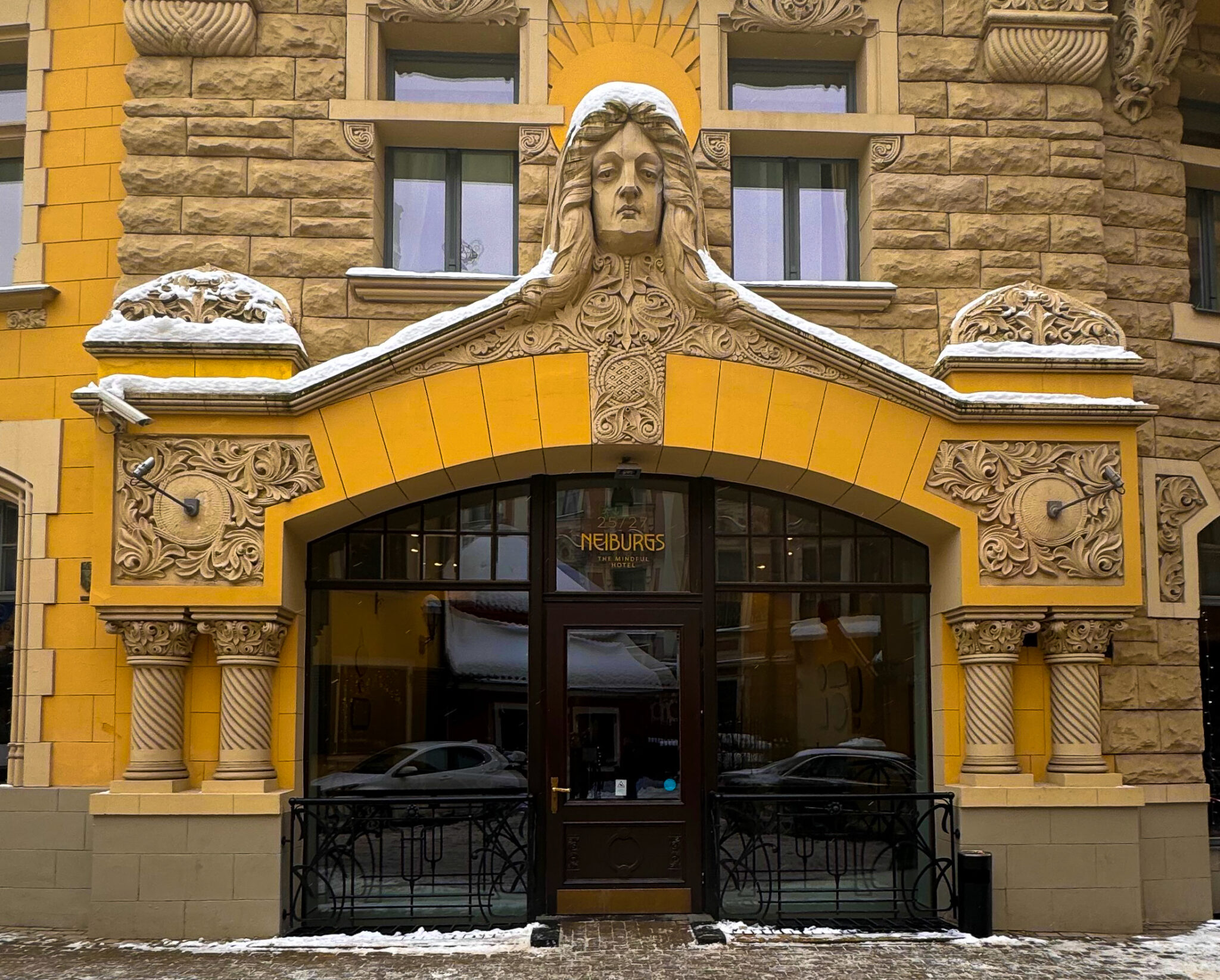
Neiburg’s Hotel | Photo Credit: Jennifer Eremeeva
Begin at the Neiburg’s Hotel (25/27 Jauniela), in the Old Town, which makes a nice stop for coffee or light refreshment once you’ve finished your exploration of the Old Town and are ready to move on to the Art Nouveau District.
Then head to the highest concentration of spectacular buildings: at the intersection of Alberta iela, Elizabeth iela, and Antonias iela.
- Alberta iela, 2a
- Alberta iela, 4
- Alberta iela 8
- Alberta iela, 13
- Antonia’s iela 8
- Elizabets iela 6
- Elizabets iela 10b
- Elizabets iela 10a
- Elizabets iela 23
- Elizabets iela 33
- Strelnieku iela 4a
Other buildings of Note:
- Skunu iela 10/12
- Kaleju iela 23
- Smilsu iela 2
- Gertrudes iela 10/12
- Riga Art Nouveau Center (museum) at Alberta iela, 12. This is a corner building with the entrance on Strēlnieku iela.
Need More Structure?
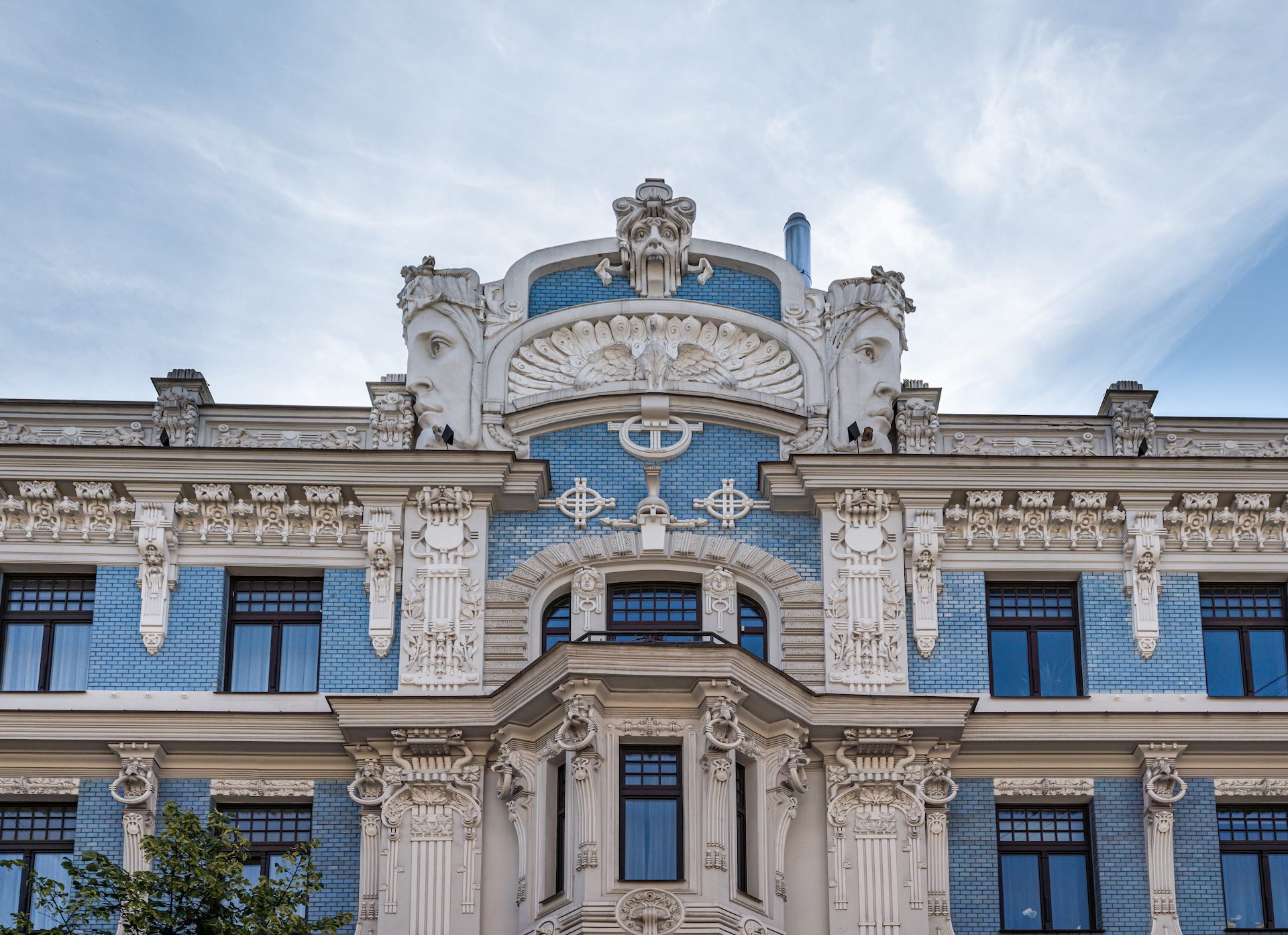
Elizabets iela 10b | Photo Credit: Diego Grandi via Shutterstock
Climb to the Top of St. Peter’s Cathedral
There are many great vantage points in Riga, but St. Peter’s Church offers an incomparable 360° panorama of the city. Buy tickets at the main entrance for the elevator, which whisks you up to the belfry, from which you can see the entire city laid out in front of you. A must for shutterbugs and architecture enthusiasts!
Tip: during summer, this attraction is popular! Consider beginning here as soon as the ship docks to ensure you do not spend excessive time in the elevator.
Explore Further
If this is not your first trip to Riga, or if your tastes incline towards something else, try these enjoyable attractions!
Relax on a Canal Cruise
From spring to early autumn, canal boats ply the Riga City Canal, with larger vessels heading into the Daugava River itself. Pick up a boat in the Kronvalda Park, to the left of the Freedom Monument as you face it.
Book your canal cruise ahead of time to be sure you secure your place.
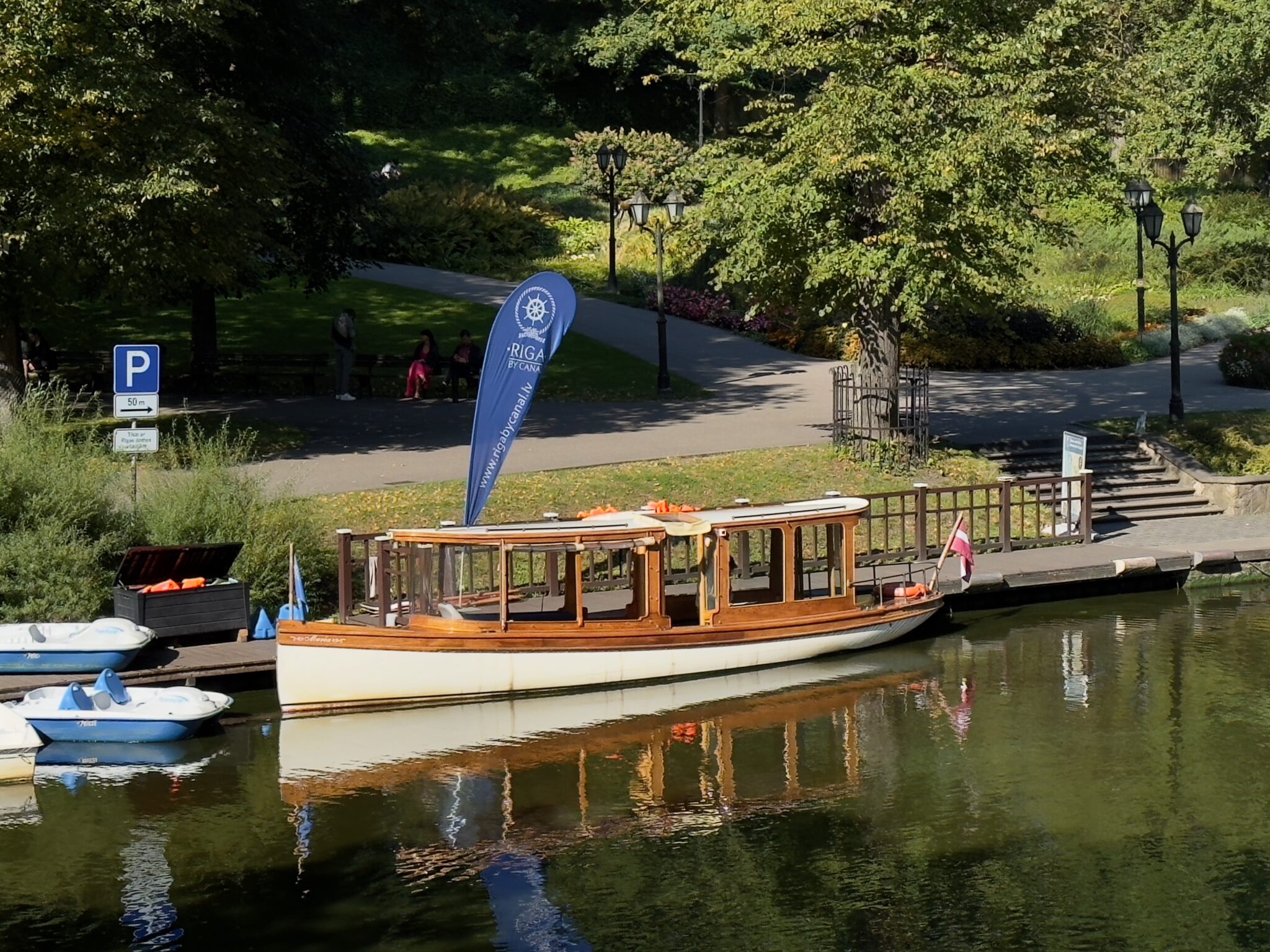
Cruises on the Riga City Canal | Photo Credit: Jennifer Eremeeva
The Central Market
Foodies flock to the Central Market of Riga (Rīgas Centrāltirgus at Nēģu iela 7), housed in four up-cycled airplane hangers left by the Germans at the end of World War I. The market halls team with stalls selling fresh produce, Latvia’s delectable dairy products, dense rye bread, and an abundance of fresh and smoked fish. Don’t be shy about accepting samples from the merchants.
Visit the food court to sample excellent Latvian craft beer and other regional delicacies.
For a more immersive experience, book a guided tour with a local expert.
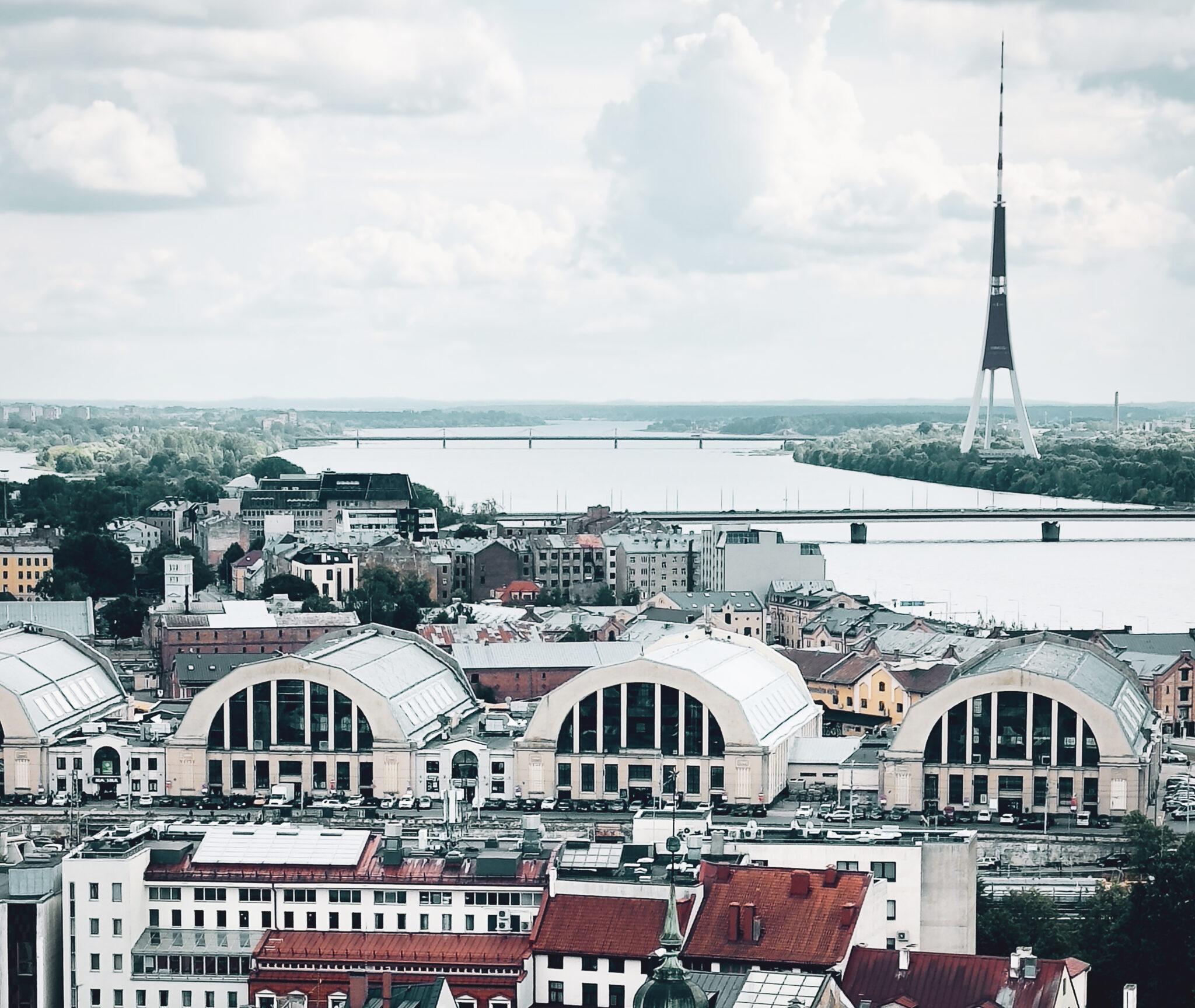
The Pavilions of Riga’s Central Market | Photo Credit: Jennifer Eremeeva
Traditional Wooden Architecture at the Ethnographic Museum
Head to Riga’s environs to explore one of Latvia’s most important cultural institutions, which showcases the region’s traditional wooden architecture. On the shores of Lake Jugla, the Ethnographic Museum offers the opportunity to to walk in the pristine woods, horseback ride, and enjoy a traditional meal in the Priedes Krogs Pub. Traditional handicrafts are on sale by local artists.
Learn more: http://brivdabasmuzejs.lv/en/
The Latvian National Art Museum
Riga’s elegant National Art Museum (Location: 1 Jaņa Rozentāla laukums) is one of the city’s key cultural institutions. Visit the museum’s permanent display of Latvian art from the 18th to the 20th century and revolving exhibits from all over the world.
The Museum is closed on Mondays.

The Latvian National Art Museum | Photo Credit: Jennifer Eremeeva
Quirky Traditions & Fun Facts
The Bremen Town Musicians
Don’t leave St. Peter’s Church without giving the noses of the Bremen Town Musicians a rub for good luck!
The statue portrays the protagonists of Grimm’s famous fairy tale, squinting through an iron curtain, which is the work of Christa Baumgärtel. The statue was a gift from the city of Bremen to its sister city, Riga, in 1990 as a talisman of hope as Latvia moved towards independence.

The Bremen Town Musicians | Photo Credit: VolnaP via Shutterstock
The ties between Riga and Bremen are centuries old. Albert von Buxthoeven, Bishop of Bremen, founded Riga in 1201. Both cities were members of the Hanseatic League, and both consider St. Peter guardians and Roland as their hero.
The Cat House (Kaķu nams)
As you explore the Old Town, keep your eyes peeled for the rooftop of 10 Meistaru iela, a medieval-style house with Art Nouveau elements. However, it isn’t the architecture that sends visitors to the city hunting for this iconic building, but the two cats perched on the roof.
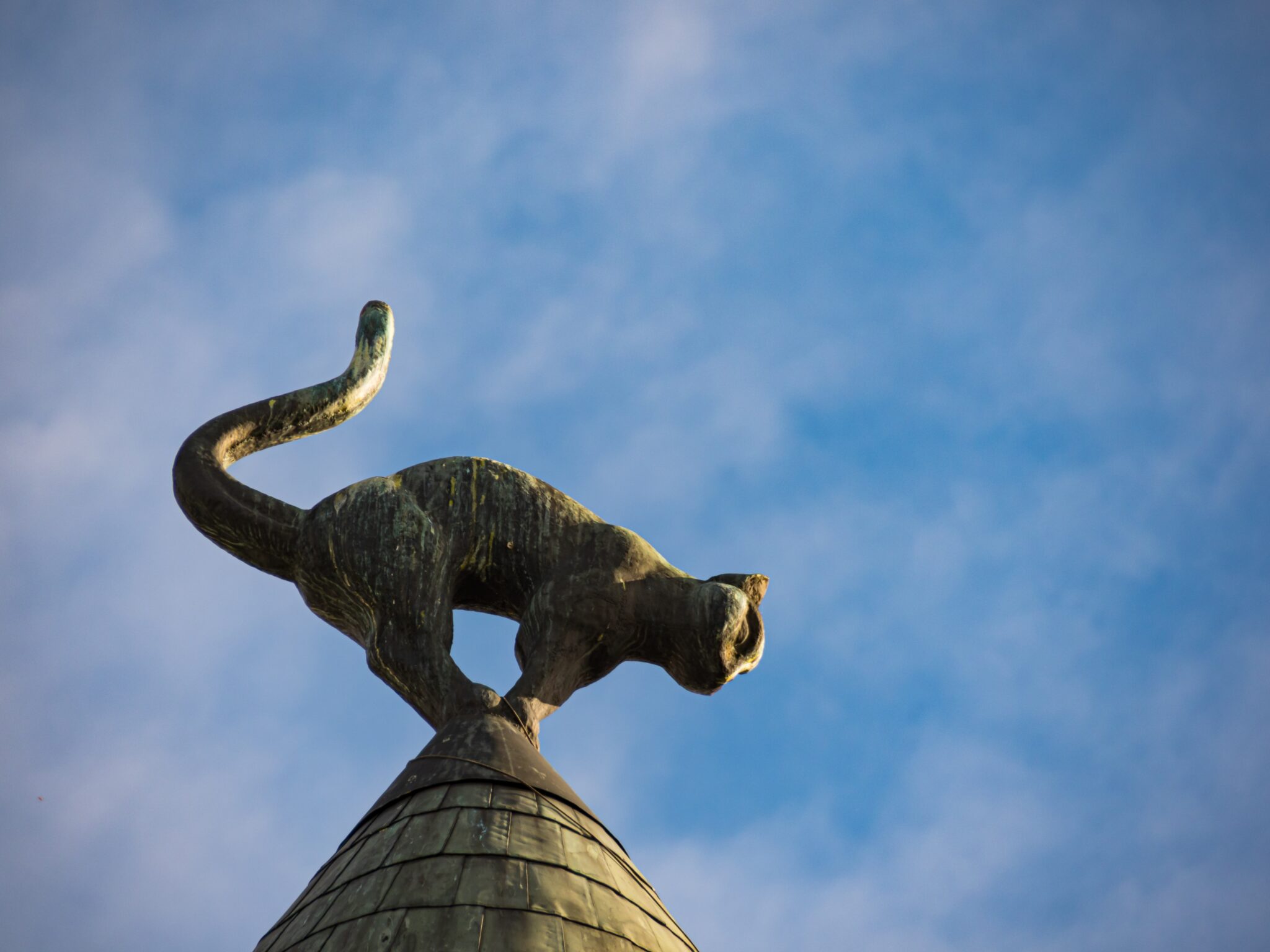
The Cat House | Photo Credit: Nowaczyk via Shutterstock
Local legend says that the wealthy merchant who owned the house had fallen out with the members of the Great Guild and placed the cats on top of the roof with their backs arched and their tails raised to show his disdain for them.
Later, the cats’ direction was reversed.
What to Eat & Drink in Riga?
Food & Drink
Once upon a time, not so long ago, culinary experts claimed that there was no such thing as “Latvian cuisine.” Nothing could be further from the truth! Like most Nordic countries, Latvia’s cuisine rests on the pillars of smoked fish and meat, dense rye bread, pulses, rich dairy, favorable beer, and a magical cordial. Latvians are also fantastical foragers of the fruits of the forest with a mania for mushroom hunting, berry gathering, and beekeeping.
Riga has been on a quiet journey to culinary superstardom. The city boasts several excellent high-end restaurants where chefs are pushing the boundaries of traditional Latvian cuisine into something new and very exciting. Visitors to Riga are spoiled for choice for restaurants, cafes, bars, and of course the bounty of the Central Market, a must for all foodies.
Typical Dishes and Drinks to Sample
Pork Knuckle and Mushy Peas.
Like it or not, this is Latvia’s national dish. Done well, this can be the ultimate comfort food.
Cold Beetroot Soup (Agustā zupa)
Each Eastern European country has a version of cold beetroot soup, which is enjoyed all summer. Latvia’s version is made with kefir, pickled beetroot, hard-boiled egg, pickled cucumbers, radishes, and lashings of fresh dill. Nothing beats the heat like it!
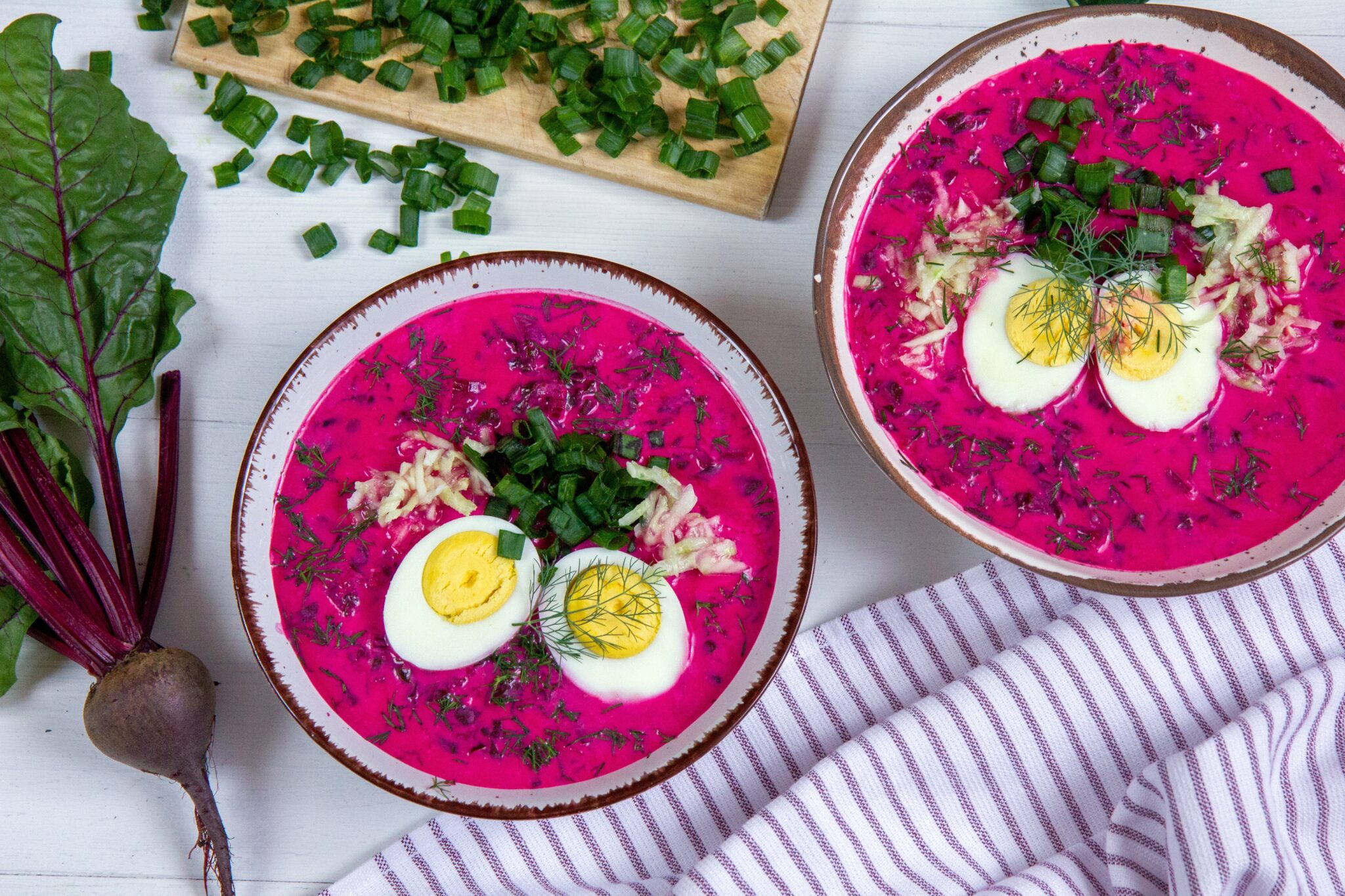
Cold Beetroot Soup (Agustā zupa) | Photo Credit: Monika_1 via Shutterstock
Sorrel Soup (Skābeņu zupa)
Tangy sorrel is a signature flavor in Latvian cuisines. Though it turns up in salads, sauces, and main dishes, it is most often found in soup, which runs the gamut from a light cream soup to a hearty, stew-like soup spiked with bacon and root vegetables, and often garnished with boiled or poached egg.
Sardines
Riga is justifiably proud of its seafood, and particularly its sardines, which are packaged as “Riga Gold” and rival anything to come out of Portugal. These make an excellent souvenir.
Riga Black Balzams
Latvia’s national tipple is a syrupy botanical bitter liqueur, first distilled by a Latvian pharmacist in the 18th-century and sold more for its medicinal properties than for its alcoholic content. It skyrocketed to fame when Catherine the Great was treated with it while in Riga.
The original flavor of Black Balzams tastes something like Fernet Branca, and is often served with coffee. In more recent years, new flavors such as Black Current and Cherry have been introduced, which are more palatable.
Try Balzams on its own, or “Hot Balzams” which is mixed with hot water, citrus, and spices!
Craft Beer
Latvians adore their beer and in the past decade, craft beer has really taken off.
For a more systematic exploration of the craft beer scene, join a guided tour of Riga’s breweries with generous tastings!
Recommended Restaurants, Cafes, and Bars
Old Town
- Domani Cannes A delightfully unpretentious restaurant near St. Peter’s Church, which serves unfussy food from local ingredients. This is my go-to restaurant when guests visit. Skārņu iela 10
- Key to Riga A bit kitchy, but this is the place to enjoy a great view of the cathedral and a super place to try the national dish of pork and peas. Doma laukums
- Gutenbergs Rooftop Restaurant A great rooftop restaurant tucked into the Old City with excellent Latvian and European cuisine. Doma laukums 1.
- Neiburgs Elegant fare in one of the city’s oldest hotels. Jauniela 25/27
- Kalku Vartu Upscale Latvian and European food. Jauniela 20
- Cafe Kuze: A marvelous Art Deco cafe with a delicious history of chocolate making. Jekaba str. 20/22
- Beer Salon My Beer An excellent beer hall, where you can sample some of Latvian’s excellent craft beer. Alksnaga iela 10/12
- Riga Black Magic This tiny cafe is the perfect place to sample Riga Balzams and delectable Latvian chocolates. The interior is a must for photographers! Kalku 10
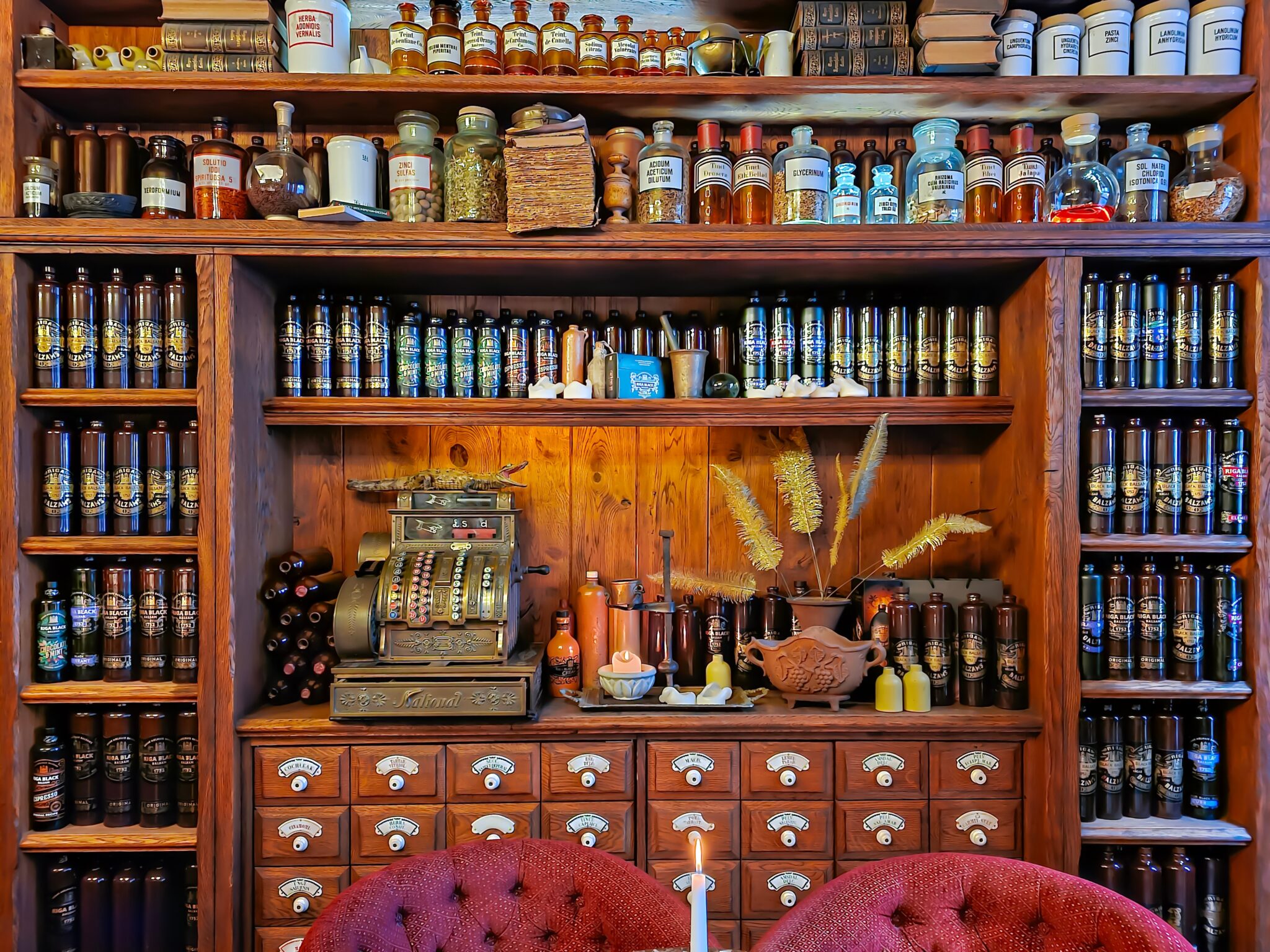
Riga Black Magic | Photo Credit: Tanya Keisha via Shutterstock
Recommended Restaurants, Cafes, and Bars
Art Nouveau District
- Radisson Blu Hotel Skyline Bar: Another superb rooftop option with excellent views of the city. The best place to take pictures is actually the rest rooms! Elizabets iela 55
- The Flying Frog An informal spot ideally in the heart of the Art Nouveau district. Food here is unfussy and affordable. This is my local, so I can heartily recommend both the sorrel soup and the poke bowl. Try some of their lemonade with fresh herbs! Elizabets iela 31
- The Catch An excellent upscale fish restaurant. Dzirnavu iela
- Casa Nostra If you are tired of Latvian food, head to Casa Nostra — another of my local favorites. This is fantastic homemade Italian food. Elizabetes iela 10B, Riga.
- Forest One of the better “Nouvelle Latvian” restaurants, which makes excellent use of fresh, seasonal ingredients. This is a popular spot so reservations are a must! Raiņa bulvāris 21
Shopping
Riga’s Old Town boasts numerous souvenir shops where you will find a range of items. Some typical items that are unique to Latvia and the Baltic States are:
Amber
There are numerous shops selling amber in the Old Town, with a high concentration on Krāmu iela, around the corner from Neiburg’s Hotel.
Knitting Wool and Latvian Mittens and Socks
Latvia is a country of knitters and Riga’s Old City has two excellent stores that should be on every knitter’s list to visit.
Boutique Tines Riharda Vagnera iela 5
Hobby Wool Maza Pils 6,
Linen Tableware, Clothing, and National Costumes
Latvia’s linen is prized the world over. The best and most convenient places to look for it are at Boutique Tines (see above) or Jaunais Salons or SENĀ KLĒTS just behind the Town Hall Square.
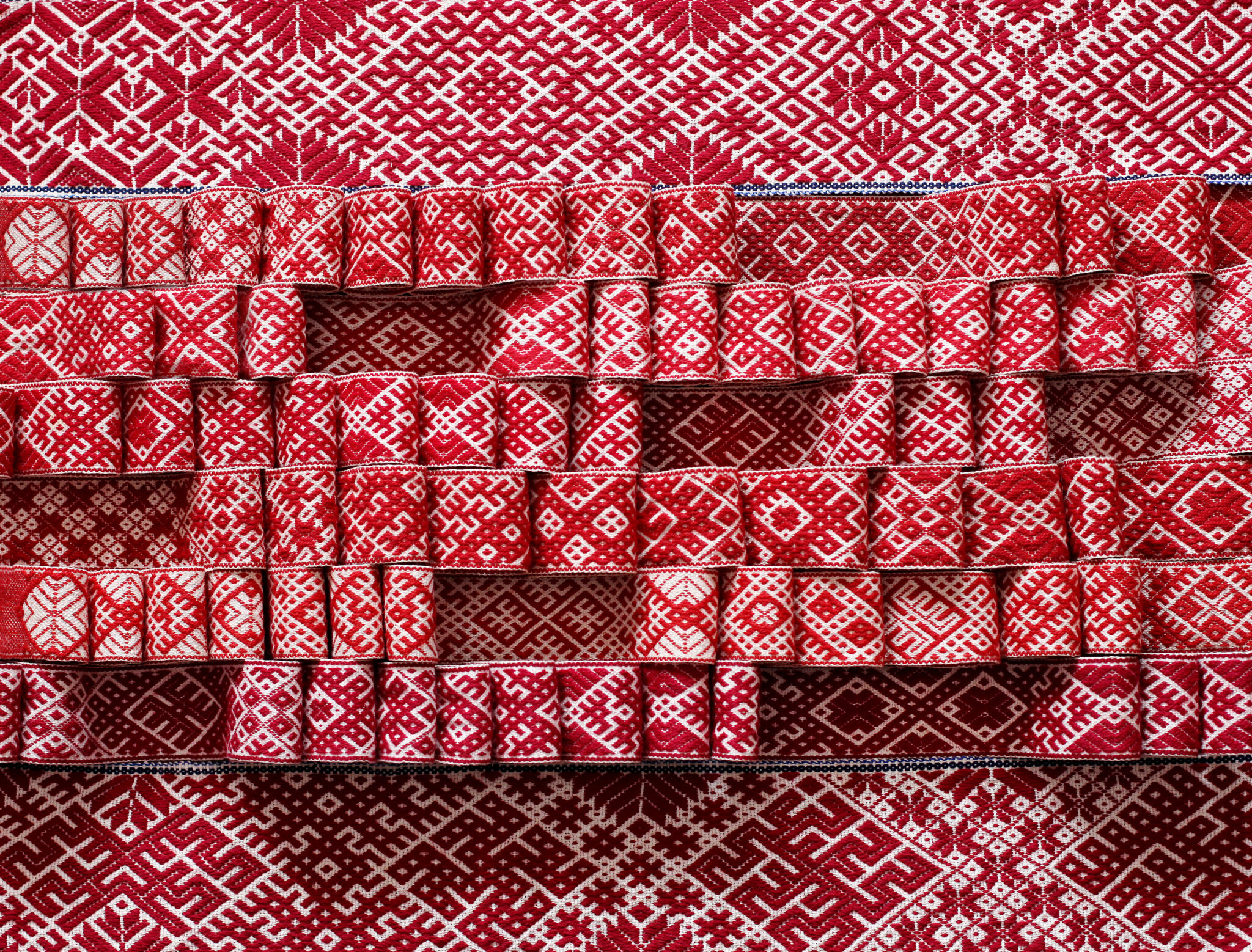
Traditional Latvian Embroidery | Photo Credit: Sakss via Shutterstock
Practical Information
Where is the Ship?
Riga is expanding its cruise terminal, but in 2024, most cruise ships docked on the embankment of the Daugava River, which is just a 5-minute stroll into the Old City. This is ideal, since the cruise terminal is about a 10-15 minute drive from the city centre. Check with ship’s Shore Excursion team to ascertain where the ship will dock.
Search for Accommodation
Currency:
The currency of Latvia is the Euro. Visa and Mastercard are widely accepted. American Express is accepted in more upscale retail outlets and restaurants.
Languages:
Latvians speak Latvian, one of two Baltic languages to survive to our era. Most Rigans who work in tourism or other service industries have an excellent command of English. You may find the Latvians somewhat introverted, but they are friendly and helpful to visitors to the capital.
Public Transportation
Buses, trams, and trolly buses are safe and affordable. Riga’s municipal government provides comprehensive information on how to use public transport on this helpful website.
Taxis:
Uber and Lyft do not work in Riga, but the popular Bolt Taxi is a great substitute. Download the Bolt App ahead of time if you think you may wish to use it.
A note on walking: Riga’s Old City is paved with cobblestones: sturdy footgear is a must!
Riga: A Brief History
The Seat of Albert von Buxhoeveden
Following a warming-up period at the end of the first millennium CE, German interest in what lay across the Elbe River intensified. A mania for converting the pagan Balts and Slavs inspired numerous expeditions to the area of the present-day Baltic States. Notably for the history of Riga, Bishop Albert von Buxhoeveden led a task force of 23 ships and 500 crusaders from Lübeck to the delta of the Daugava River in 1200, establishing a fortification on its banks, which would ultimately become Riga.
The Eastern Baltic’s wealth of natural resources such as amber, timber, iron, and grain was known in antiquity, and the wide Daugava river was a major conduit along which the Vikings raided and traded during the early years of the Viking Age (793-1066).
The Livonian Order
To protect the new fortification, Albert founded the Livonian Brotherhood of the Sword, a local version of the dominant military order of the day in Northern Europe: The Teutonic Knights.
Albert stands out as one of the keenest political operators in this period of Northern European History. He combined religious zeal with a keen sense of diplomacy, politics, and economics. He deployed all these talents when he secured a papal bull to force all German traders to funnel their Baltic trade through the growing city of Riga.
Albert left his mark on the city in several of the city’s key historic buildings, laying the foundation stone for the Dom Cathedral and St. James Church.
The Hanseatic League
The importance of German trade led to Riga joining the Hanseatic League in 1282. This powerful association of merchant cities headquartered in Lübeck became a dominant economic and, to a certain extent, political and military power in the Middle Ages. Riga’s fortunes rose with the Hansa, and many of the city’s buildings in the historic center reflect the signature style of Hansa cities, made from fired brick — then the most costly building material — with high triangular roofs, which served as warehouses for the merchants. You can get a lovely sense of this from many of the buildings in the Old Town, particularly the Three Brothers, which house the Latvian Museum of Architecture.

Riga in the late 16th century (source: Wikimedia Commons)
Shifting Political Associations
Riga’s fortunes continued to be dictated by the wider political shifts in Northern Europe. Like many other Northern European cities, Riga adopted Protestantism in 1522. With its desirable location at the intersection of river and sea, Riga changed hands numerous times throughout the centuries: becoming a vassal of Sweden in the turbulent 17th-century, and it was from Sweden that Peter the Great wrested Riga along with much of the Eastern Baltic in his successful Northern War.
As part of the vast, multi-ethnic and multi-confessional Russian empire, the people of Riga battled hard to keep their own traditions and language alive — no easy task in the wake of a vigorous Russification campaign during the reigns of Alexander II (1855-1881) and Alexander III (1881 – 1894). Riga became an important industrial center for heavy manufacturing, leading to a sharp rise in prosperity as rail linked the city to both the Russian empire and Western Europe. Riga became the third largest city after Moscow and St. Petersburg.
The National Awakening
The rise in a prosperous middle class in Latvia fueled a national reawakening in the late 19th century, where a concerted effort was made to preserve national Latvian traditions, including the all-important folk songs or dainas, which date back more than a thousand years and preserve stories of the pagan gods and ancient heroes in an oral tradition, that has happily survived to this day.
Latvian Folk Song Festivals
Riga played host to the first-ever folk song festival in 1873, inaugurating a tradition that still continues to this day, and is a UNESCO Masterpiece of the Oral and Intangible History of Humanity. The festivals are held once every five years, with representatives attending from all over Latvia and the world.
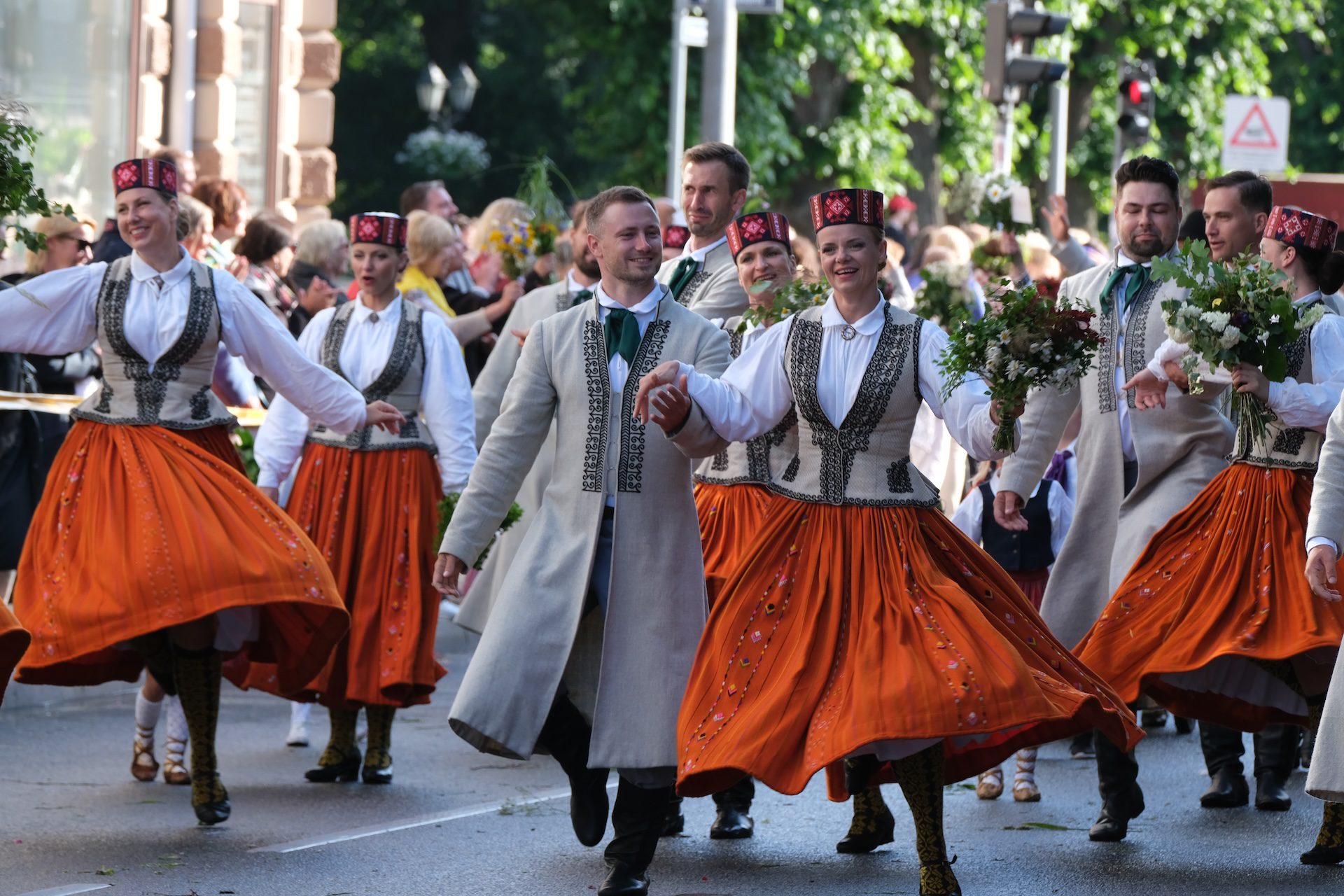
Latvian Folksong Festival (Photo Credit: Motalb via Shutterstock)
Latvian Independence 1918 – 1940
The outbreak of World War I heralded the Revolutions of 1917 in Russia, and the breakup of the Russian empire and the creation of the Soviet Union from its remains. Latvia, like its neighbors Estonia and Lithuania, declared independence in 1918. Sadly, this was all too short-lived. Following the outbreak of World War II, Latvia was occupied first by the Soviet Union and later Germany. 24,000 of Latvia’s Jewish citizens were slaughtered in the Rumble Massacre in 1941.
The end of the war did not signal a new beginning for Riga, which was recaptured by the Red Army in 1944 and Latvia was relegated to a republic of the Soviet Union until 1991, which the country once more declared independence. Latvia joined the United Nations in 1991, NATO in 2004, and the European Union in 2004.
For more information about Riga’s colorful history, listen to my interview with author Kevin O’Connor about his marvelous book, “The House of Hemp and Butter: A History of Old Riga,” for the New Books Network.
Riga Today
Today, Riga remains the capital of Latvia and an important city in Eastern Europe. It is the transportation hub for the Baltic States, serviced by the small but efficient Riga International Airport, and is also a key financial center. The pillars of the economy today are a mix of the traditional and cutting edge: timber, metallurgy, transportation and logistics mix with IT and FMCG in a diversified economy. The population of Riga is 619,000.

I hope you’ve enjoyed this 8-Hour Guide. I make every effort to ensure that all of the information provided is current and accurate. I encourage you to check restaurant and museum websites to ascertain opening times and other relevant information.
This project is evolving and I would love to hear your thoughts on this and other 8 Hour Guides! Comment below, or email me via the link above! Wishing you safe onward travels!
Enjoy More Posts Like This One!
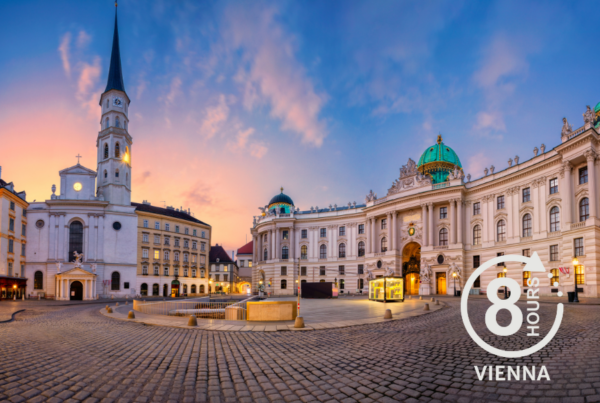 8 Hours in Vienna, Austria: The Best Things to Do
8 Hours in Vienna, Austria: The Best Things to Do
8 Hours in Vienna, Austria: The Best Things to Do
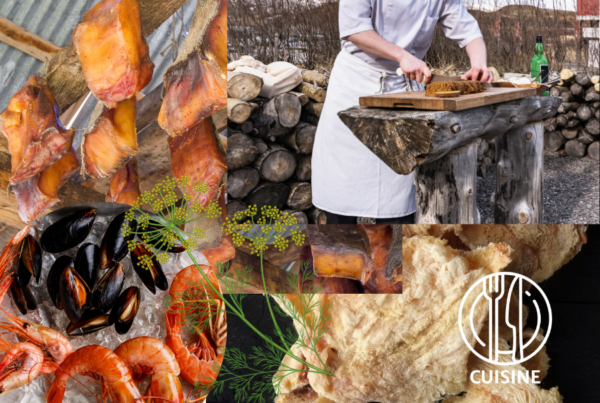 The Must-Try Things to Eat and Drink in Iceland
The Must-Try Things to Eat and Drink in Iceland
The Must-Try Things to Eat and Drink in Iceland
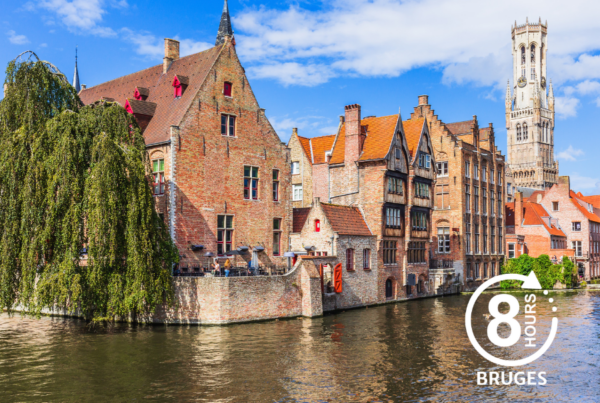 8-Hours in Bruges, Belgium: The Perfect Itinerary
8-Hours in Bruges, Belgium: The Perfect Itinerary
8-Hours in Bruges, Belgium: The Perfect Itinerary
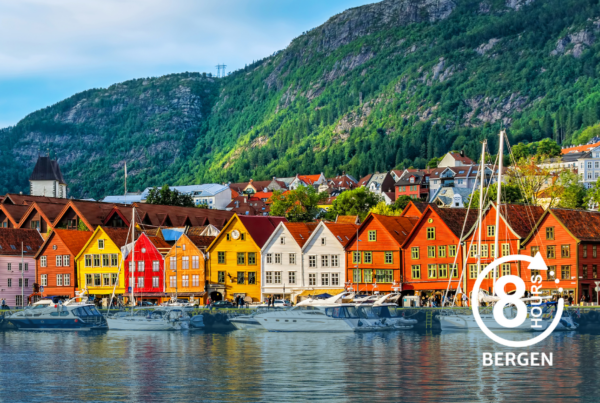 8 Hours in Bergen: A Guide to Norway’s Second City
8 Hours in Bergen: A Guide to Norway’s Second City
8 Hours in Bergen: A Guide to Norway’s Second City
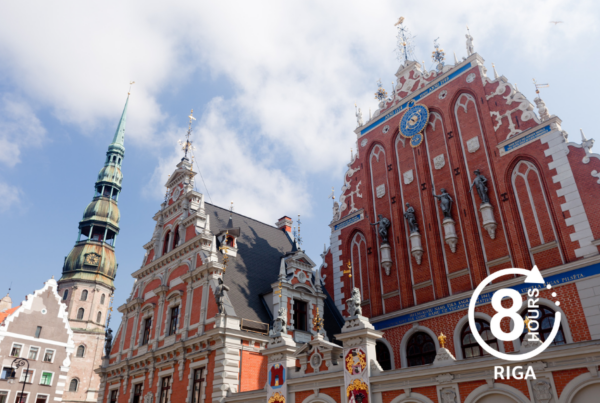 8 Hours in Captivating Riga, The Capital of Latvia
8 Hours in Captivating Riga, The Capital of Latvia
8 Hours in Captivating Riga, The Capital of Latvia
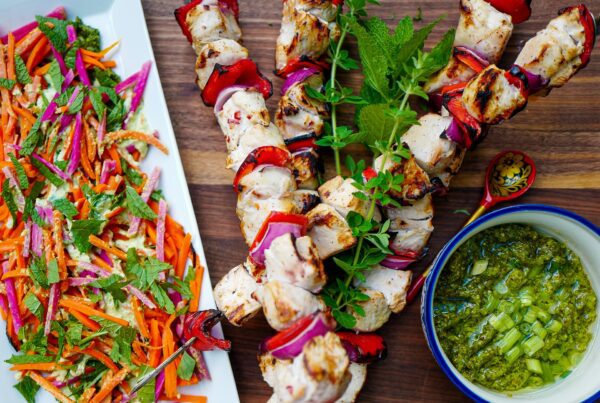 Tangy Kefir Brined Chicken Shashlik
Tangy Kefir Brined Chicken Shashlik
Tangy Kefir Brined Chicken Shashlik
 How to Make Shashlik: Recipes for Juicy Meat Skewers
How to Make Shashlik: Recipes for Juicy Meat Skewers
How to Make Shashlik: Recipes for Juicy Meat Skewers
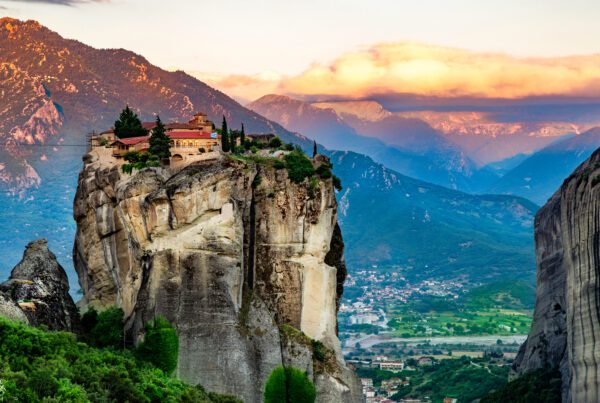 Day Trips from Athens: Meteora, Greece’s Hidden Gem
Day Trips from Athens: Meteora, Greece’s Hidden Gem
Day Trips from Athens: Meteora, Greece’s Hidden Gem
 My Top 10 Travel Planning Tools
My Top 10 Travel Planning Tools
My Top 10 Travel Planning Tools
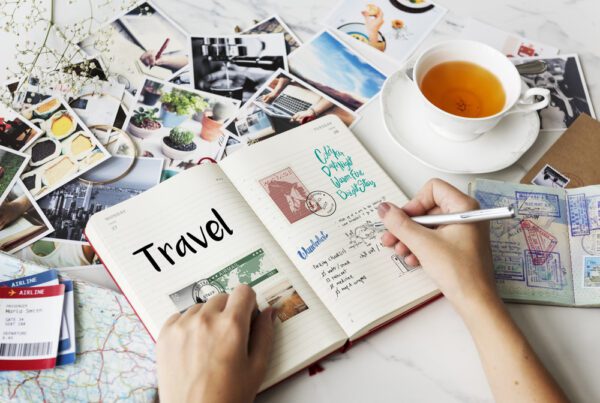 7 Steps to a Perfect Travel Bucket List
7 Steps to a Perfect Travel Bucket List
7 Steps to a Perfect Travel Bucket List



Jennifer, I love this 8 hour guide: your prose, photos, and expert information make me want to head straight to Riga. I can’t wait to see what else you write in the series.